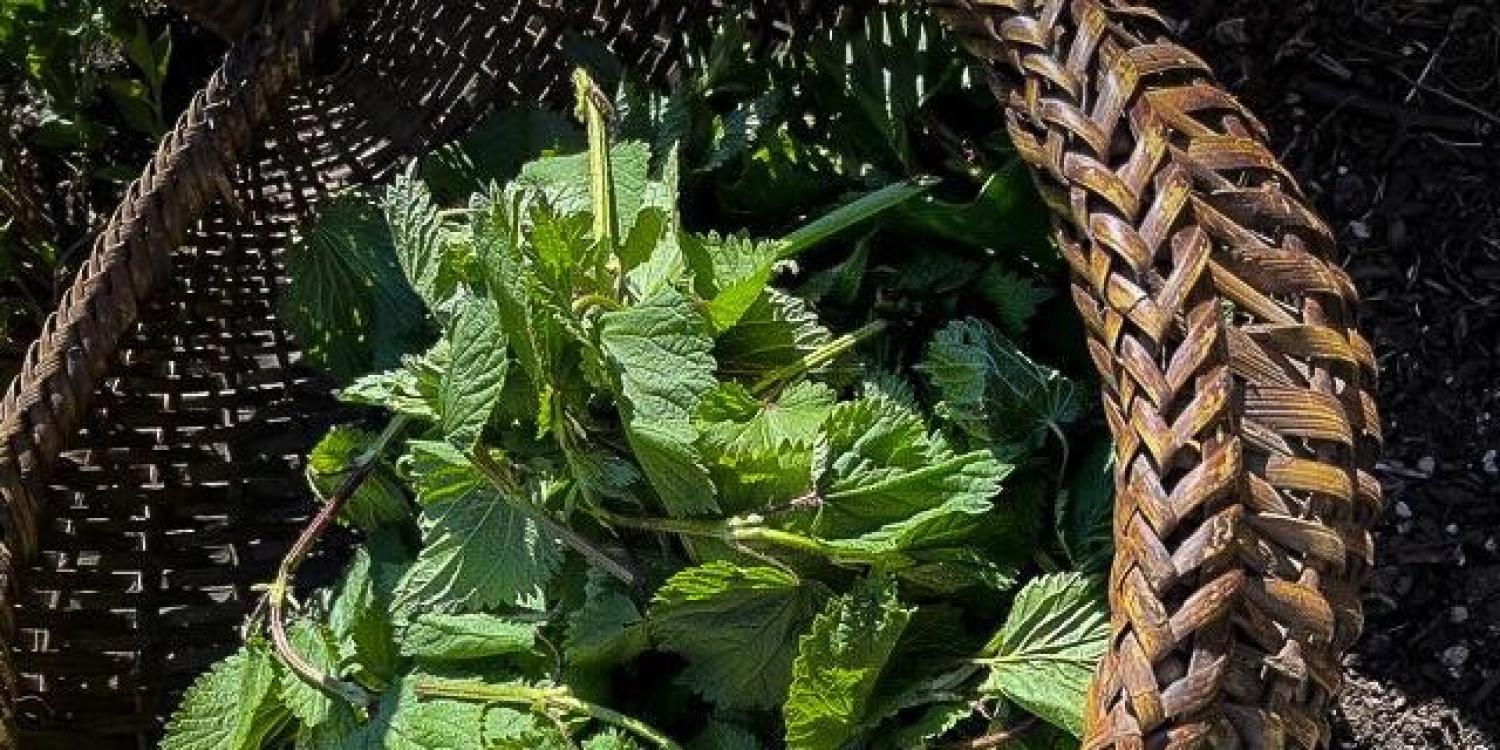
Stinging nettle is a plant that can sting and cause welts, but when the sting is removed a traditional “superfood” emerges. Native Indigenous peoples have gathered stinging nettles since time immemorial. They can be used medicinally, ceremonially, made into fabric, nets, rope, and are a highly nutritious food source.
The roots, seeds, stems and young, tender leaves are edible, so nettle has multiple culinary applications. Using sustainable practices along with safe food preservation methods, this traditional herb can be enjoyed in delicious recipes year-round. However, not many people are aware of such applications and consider it an unwelcome weed.
In response, the Wild Edibles publications project is one of the products of the Supporting Indigenous Preservation and Reclamation through Food Preservation grant from The Moore Family Center for Whole Grain Foods, Nutrition and Preventive Health in the Oregon State University College of Health. “Wild Edibles: Stinging Nettle” is the first of the series to be published in the Oregon State University Extension Service catalog.
The content was developed through the cooperative efforts of OSU Extension and Indigenous-serving organizations and food sovereignty coalitions in the Portland metro area, including staff from The Native American Youth and Family Center and the Future Generations Collaborative. The publication features accurate history, nutrition, safe food preservation methods, recipes and ways to respectfully gather stinging nettle.
A strength of this publication is that it describes sharable methods and time in the life of the plant to gather the stems and leaves so the resource continues to flourish throughout the seasons. Safe gathering is possible when foragers wear protective clothing and bring gloves. Research-based food preservation methods from the National Center for Home Food Preservation were applied to stinging nettle. Blanching is used for freezing and drying methods, which eliminates the “sting.”
To uplift the traditional importance of stinging nettle and other foods in this series, the authors made an effort to eliminate colonizing language with culturally appropriate, respectful approaches to the readers. The authors developed specific, plain-language, trauma-informed, peer-reviewed, accessible and actionable documents that could be shared easily across the state and broader region. The objective was to reach all including historically underserved Indigenous communities in a truly inclusive and equitable way. The document is available in both English and Spanish.
As a result, several local Native-serving organizations incorporated the article into newsletters and shared it to their community bases. They included The Native American Youth and Family Center, 7 Waters Canoe Family, Northwest Portland Area Indian Health Board, Native American Rehabilitation Association of the Northwest Inc. and Wombyn’s Wellness Garden. The publication was adopted by the OSU Extension Master Food Preserver volunteer program as part of the training materials.
In 2023, the publication was viewed 5,196 times by 4,412 individuals in the OSU Extension catalog from 15 states and three foreign countries – Canada, the United Kingdom and Australia. It was downloaded 133 times. The positive feedback score for 2023 was 100%. At least 90 print copies of this publication were distributed by Extension offices across Oregon.